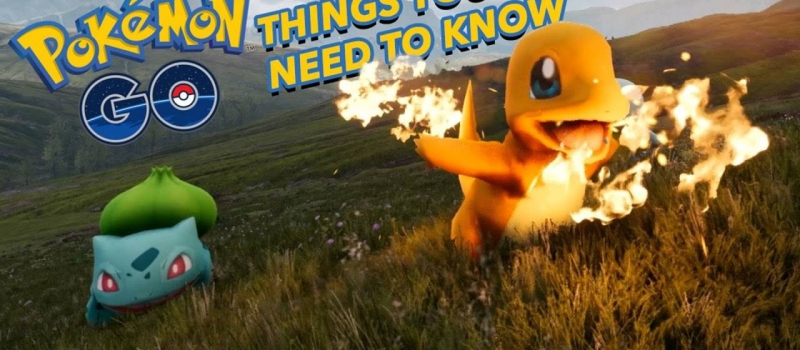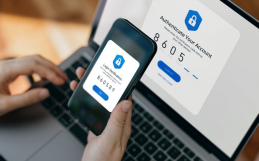A Clinton running for President, Ghost Busters on the big screen and our favourite childhood Nintendo game, Pokémon, has made a comeback – it’s the 90’s with a 2016 upgrade. Pokémon Go, the fastest growing app worldwide, connects nostalgia with the latest in smartphone technology and it is taking over streets, mobile screens and our morning coffee conversations at the office.
For those who haven’t taken the Poké-plunge yet, this gaming app uses GPS on mobile devices to pin point areas as stops to collect items, and more so, using your surroundings to seek, collect and grow your Pokémon collection. The world is your playing field, which means pretty much anything goes – the park down the street, local school yards and even our Goreway office are all ideal catch spots. However, game play has also extended to mining caves, over dangerous cliffs, onto private property and even in a tree as discovered by these players. Considerations such as this then brings the idea – is Pokémon Go all fun and games until someone gets hurt? Almost immediately as the app was launched, numerous controversial events occurred which begged the same question. Furthermore, Pokémon Go is almost certainly poised to become a thorn in the side of business leaders and your IT team. Here are a few points to consider.
Is Your Pokédex Secure?
With more and more players joining the gaming network on a continuous basis, there is a small group of individuals who are thinking twice if not thrice before they jump on board. That’s the group of cyber-security experts who naturally break down the apps function to really determine if it’s safe to download, just as Adam Reeve did and wrote about in his blog. The first thing to consider is the permission allotted when going through initial download and set up. Listed items include ‘Precise Location’ and ‘Full Account Access’ (which means permissions to tools such as e-mail, file sharing services, photos and more). As many businesses now provide mobile devices to employees (including ITW), these work phones are being put through a journey of collecting Pokémon, and as they are out scouring for little digital creatures, someone else is scouring their storage. Not only is information like this worth large sums, especially considering how large the database really is, the intrusiveness and access to pertinent information labels risk for any business. The non-techy would then ask, “Well, what would Niantic want to do with that information anyways?” The thing is, it’s not so much the app developers of concern, its outside forces who can target them and hijack the information now being collected all over the world. And anyone malicious enough to go after that data treasure trove isn’t looking to benefit humanity or drop more Pokéballs in your item basket.
There’s No Potion to Increase Data
Along with the provided mobile devices comes the attached corporate mobile plan and the data allotted to it. Do your employees use their phones for gaming? Is your company OK with that? However strict your acceptable use policies may be, you can expect a demonstrable hike in data usage as the Pokemon Go app runs constantly with location services and a continuous relay back to the central game servers. But if Catching Them All takes priority, there are some ways to reduce your data so you can continue to play without having to boost your data plan. As an IT leader with users undoubtedly chasing Pokemon in your office – you need to get awareness about data usage out there, and fast.
Catch Now, Work Later
“That 2016 forecast and budget report is due tonight, but oh wait, there’s a rare Charmander nearby and I can’t sit down until I catch it.” While not as easily tracked and budgeted as something like mobile data, employee time management and performance are likely affected by new popular mobile games like Pokemon Go. Whether or not this is a concern comes down to how much autonomy and self-discipline are baked into your company’s culture and operations. Some organizations encourage employees to play, because of the enhanced ergonomics of walking and stretching and then getting back to work. One thing is clear, this latest craze provides your leadership team an opportunity to examine how much freedom—regarding performance, time management, and device usage—that your organization chooses to afford your staff.
But Wait, There’s more!
Part of what makes Pokemon Go so attractive is the Augmented Reality (not to be confused with Virtual Reality) experience it delivers to players; overlaying a digital fabric onto your view of the real world around you. As device and app developers continue to employ AR in their design thinking, creative business folks are lining up to take advantage of the sales and marketing opportunities that it presents. Imagine being able to purchase a Poke Stop location for your restaurant to drive new business. Or perhaps embedding advertising for your brand onto the augmented reality screen of the players in your city? It’s an exciting time, indeed. The game encourages players to meet new people and get outside exploring your community. However, inside of your office and regarding your company data on mobile devices – IT leaders need to spend some time understanding the implications and make decisions that fit your business needs and policies. Once you’ve got those things sorted out, keep your head up, your items stacked, and Pokémon GO Catchem All!




